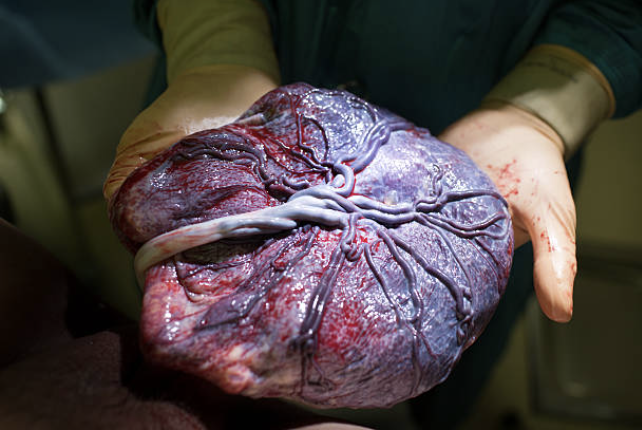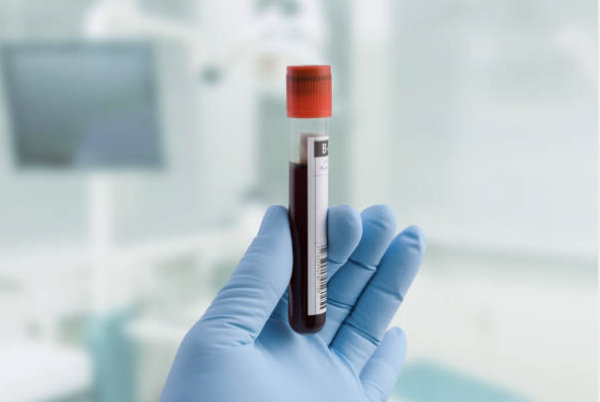
Newborn Stem Cell Preservation FAQs
Why do families preserve newborn stem cells?
Both cord blood and cord tissue are rich sources of newborn stem cells. Stem cells are the body’s “master cells,” helping to build organ tissues, blood, and the immune system. Cord blood predominantly contains hematopoietic stem cells (HSCs), which have the potential to become blood and immune system cells. Mesenchymal stem cells (MSCs) can form bone, cartilage, and other types of connective tissue cells and are predominantly found in the cord tissue.
While HSCs and MSCs can be collected from other sources in the body, newborn stem cells are younger and more flexible compared to adult stem cells from sources like bone marrow and peripheral blood.1 Because of this, when used in transplants, cord blood has a lower risk of certain complications, such as chronic graft vs host disease.2–3 Additionally, newborn stem cells can be frozen and stored in their pristine state to avoid exposure to aging and harmful environmental factors that can decrease their function over time. When requested for treatment, they are immediately available and can therefore minimize disease progression in early treatment.
How are newborn stem cells used in medical treatments?
Stem cells from bone marrow were first used to regenerate blood and immune cells in patients who had received chemotherapy for cancer over 50 years ago. This evolved to include treatments for blood and immune disorders as well as certain inherited metabolic disorders. In the late 1980s, doctors started using cord blood stem cells to treat these same conditions. Cord blood is currently used in the treatment of over eighty conditions as part of a stem cell transplant.1
Not only are doctors using cord blood in transplants to save lives today, but they’re also researching both cord blood and cord tissue cells as a potential treatment for diseases. Specifically for diseases that don’t currently have a cure in an exciting new area called regenerative medicine.2-3 It’s all about establishing normal function in the body through gene therapies, tissue engineering, and cell-based therapies.
Newborn stem cells are being evaluated in clinical trials to one-day treat conditions like cerebral palsy, traumatic brain injury, acquired hearing loss, multiple sclerosis, lupus, Alzheimer’s, Parkinson’s, and diabetes.4–5 These therapies are still experimental, and there is no guarantee that treatments will be available, but newborn stem cells are already being studied in 500+ clinical trials for regenerative medicine uses.6 The U.S. Department of Health and Human Services has identified the value of this cutting-edge approach. They stated that “regenerative medicine is a rapidly growing field of biomedicine that will revolutionize health care treatment.”
How do I preserve my baby’s newborn stem cells with CBR? It’s easy! Follow these 5 simple steps: • Step 1 Enroll with CBR online at cordblood.com/enroll or call us at 888-271-4049. Say “Birth You Desire” referred you • Step 2 Wait for your collection kit (we’ll ship it to you). •Step 3 Bring your kit to the hospital or birthing center on your big day. • Step 4 Call the medical courier after your baby is born and your newborn’s stem cells have been collected by your healthcare professional. • Step 5 Let CBR handle the rest. We will notify you when your newborn’s stem cells are safely stored in their new home! Questions? Give our specialists a call at 888-271-4049.Is preserving newborn stem cells dangerous?
Cord blood collection is fast, easy, and painless for both baby and the pregnant person. Cord blood is collected after the baby is born and the umbilical cord has been clamped and cut. The cord blood and tissue being collected would typically be discarded after birth. It is not necessary to alter the normal birthing process in any way, except to collect the baby’s cord blood and tissue.
Can families preserve newborn stem cells with a C-section delivery?
In general, the chosen delivery method (vaginal, C-section) should not impact the ability to perform cord blood or cord tissue collection.
Can families preserve cord blood and do delayed cord clamping?
Preserving newborn stem cells gives a family access to potential future stem cell treatments for conditions that occur over their lifetimes, but we also recognize the value in practicing delayed cord clamping. It is possible to practice delayed cord clamping AND collect cord blood.1 Providers who practice delayed cord clamping can maximize cord blood collection by:
- Start the collection as soon as the cord is clamped and cut.
- Keeping the collection bag below the level of the cord and placenta to enhance the effects of gravity.
- Following our recommended collection procedures included in each kit.
Additionally, delayed cord clamping does not affect the ability to collect cord tissue. For families who choose longer delays where there may not be enough cord blood left to collect and store, the option to bank only the cord tissue is available. While the cord tissue does not contain the type of stem cell needed for stem cell transplants, they do contain a type of stem cell that is being investigated for numerous regenerative medicine treatments. Almost everyone has an option to bank at least one source of newborn stem cells, regardless of the length of delayed cord clamping.
Should families consider preserving newborn stem cells if they do not have a family history of diseases treatable with stem cell transplants?
Since many conditions that are treatable with a stem cell transplant don’t run in families, family history is not a reliable indicator of need. While we can look to family history for clues about risks for some common conditions being investigated in regenerative medicine (e.g., heart disease, diabetes, stroke, etc.), environmental factors can also impact whether or not someone develops these conditions. There are also no family indicators from sports injuries or anoxic brain injuries, which could potentially be treated with newborn stem cells in the future.1-2
In fact, most of the samples CBR has released have been for families who did not have a known risk for a condition based on family history.

Who can use a baby’s newborn stem cells for medical treatments?
Any first- or second-degree family member who is a suitable match may be able to use the baby’s cord blood stem cells. The baby is always a perfect genetic match to their own stem cells, but for inherited genetic conditions and certain early-onset cancers, the child’s own cord blood may not be used for their own treatment.
Full siblings are the most likely to be compatible matches, with a 25% chance to be a perfect match and a 50% chance to be a partial match. Biological parents are always a partial match to the baby’s cord blood stem cells and, if the sample is large enough or if stem cells from other sources are also used, parents may be able to use the baby’s cord blood for a transplant. It is less likely that other family members will be a sufficient match, and there is no guarantee that an adequate stem cell match will be found for any given patient.
Cord tissue stem cells are not believed to require strict matching requirements, in the same way, the stem cells found in cord blood do. This means that cord tissue could potentially one day be used not only for the baby, full siblings, and parents but also for second-degree relatives including half-siblings and grandparents.
Should families preserve newborn stem cells for each child?
Yes. Saving cord blood for each child gives a family more options. Each child would have access to his or her own genetically unique cells. Additionally, there would be an increased likelihood that a family member in need will have access to a related source of matching cord blood. In the case of twins or higher-order multiples, it is still important to save cord blood for each child separately, even if they are expected to be identical.
This is a partnership post.
